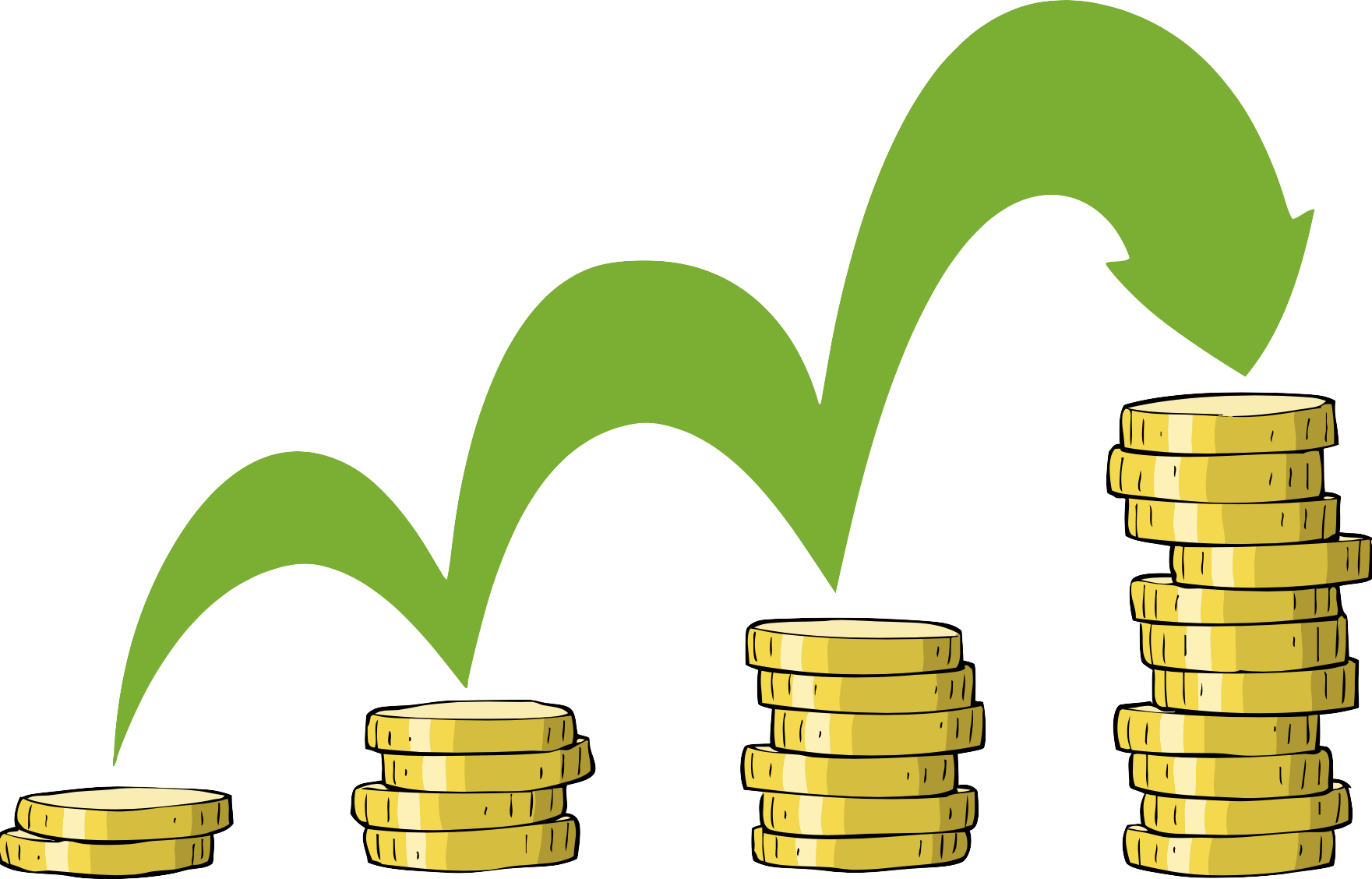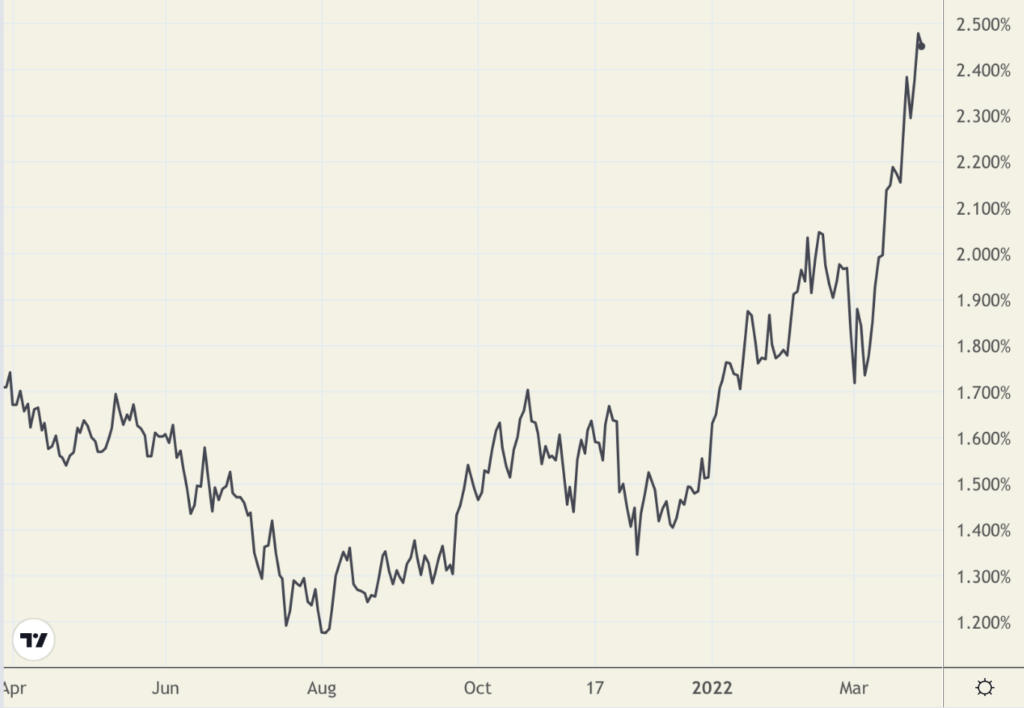NEWS &VIEWS
Forecasts, Commentary & Analysis on the Economy and Precious Metals
Celebrating our 49th year in the gold business
APRIL 2022
“Remember what we’re looking at. Gold is a currency. It is still, by all evidence, a premier currency. No fiat currency, including the dollar, can match it.” – Alan Greenspan, November 2014
––––––––––––––––––––––––––––––––––––––––––––––––––––––––––––––––––––––––––––––––––––––––––––
‘The world is being tested to the extreme.’
Protecting and building wealth in a new financial era
Interest Rate Observer’s James Grant referred to the current period as a “wild time in money.” Credit Suisse’s Zoltan Pozcar warned that “this crisis is not like anything we have seen since President Nixon took the US dollar off gold in 1971.” Mohamed El-Erian likened the Fed’s current monetary policy to that of a developing country central bank. “The Russian invasion of Ukraine and the corresponding Western sanctions and seizure of Russian FX reserves,” said long-time market analyst Lawrence Lepard, “are nothing short of a monetary earthquake.” Larry Fink, who manages BlackRock, the world’s largest investment fund, said the invasion marked “a turning point in the world order” and the end of globalization. Finally, George Soros went to the dark side calling Russia’s invasion of Ukraine “the beginning of World War III with the potential to destroy our civilization.”
If we have indeed embarked upon a new and turbulent financial era, as the above suggests, investors will be tasked with protecting and building their wealth under extraordinary and unpredictable circumstances. “History,” says James Grant, “would counsel us to be humble, prepared to listen and interpret correctly.” Swiss-based investment analyst Claudio Grass took a similarly philosophical approach (and one that we have counseled over many years). “It really does go a lot deeper than a comparison between gold and stocks, or considering the better ‘play’ for one’s portfolio performance,” he said. “The real counter-question now is ‘What is your peace of mind worth?’” Long-time money manager Stephen Leeb believes “the world is being tested to the extreme…Right now, as individuals, the best thing you can do for yourself is to buy protection, and that means investing in gold. Even under the best scenarios, a lot of turmoil lies ahead before we reach the other side, and gold will be the best way to get through it in good shape.”
Short & Sweet
THOUGH SILVER’S REACTION TO RUSSIA’S INVASION of Ukraine has been muted thus far, James Turk, the long-time precious metals market analyst, believes that is all about to change. “Given silver’s exceptional undervaluation at current prices,” he says in a recent report posted at King World News, “it appears to me that 2022 will be the year that silver completes the handle on this chart pattern by doubling in price from here. More importantly, 2022 is setting up to be the year that silver finally breaks above $50 per ounce to join the soaring prices we are seeing in so many other commodities because the dollar is being so badly debased.”
FOR MANY YEARS, ECONOMISTS HAVE SPECULATED on the impact of nation-states deciding to liquidate U.S. Treasuries en masse. Most of those discussions had to do with the dollar being unable to sustain its purchasing power. With the steady rise in Treasury yields signaling perhaps the beginnings of such a liquidation, some analysts like Craig Hemke, raise the prospect of the full-out event becoming a reality. For the most part, though, the selling thus far does not have to do so much with a decline of the dollar as it does, as Henke points out, hedging the complex reality of a widening economic war and sanctions.
“So what’s going on here?” he asks in a recent analysis posted at Seeking Alpha, “Is this simply inflation pressure and the impact of the Fed finally ending its 2020 QE program? Maybe. That’s certainly what the mainstream financial media is telling you. But what if that chart below also reveals a steady selling pressure from sovereign holders of U.S. Treasuries now that the U.S. has openly displayed a willingness to use its reserve currency status as a weapon? Put it this way… If you’re China or some other country whose long-term interests may not entirely align with what the U.S. likes and wants, would you be willing to continue with the current status quo of holding dollars and Treasuries in your foreign currency reserves?”
Editor’s note: Since Hemke’s piece was posted, some mainstream reports on the plight of the U.S. bond market have acknowledged directly the relationship between a sell-off in the bond market and rising yields.
Yield 10-year U.S. Treasury
(One year)
Chart courtesy of TradingView.com
“MILLIONS OF U.S. BANK DEPOSITORS FEEL SAFE in the knowledge that the Federal Deposit Insurance Corporation will protect their accounts, even if their bank goes under. Yes, it’s true that the FDIC says it will do so. As their website states: The standard insurance amount is $250,000 per depositor, per insured bank, for each account ownership category. However, the question is: Does the FDIC have the wherewithal to fulfill its promise? In the event of a major financial crisis, the answer is ‘no.’ Not even close.”
The problem reduces to a matter of counterparty risk. Whenever an asset pays a yield or interest, the depositor (or investor) depends upon the institution’s ability to pay – whether it be a corporation or government (in the case of a bond) or a bank (in the case of a deposit). Though the FDIC can cover losses when a bank or two fails, it cannot cover, as Stokes points out, a widespread banking system meltdown. On the other hand, gold is a stand-alone asset that does not rely on another party for value. It carries no counterparty risk. That is why some analysts portray it as the ideal defensive asset for the times.
CLAUDIO GRASS, A SWISS-BASED INVESTMENT ADVISOR who looks favorably upon gold, recently addressed a question he sometimes gets from first-time investors looking into gold: Is the metal simply too expensive at current prices? His standard reply, he says, is “expensive compared to what?”
“Now, while these are the sort of arguments I would usually bring up in conversations about ‘how high is too high’ when it comes to the gold price,” he says in a report posted at Eurasia Review, “the events of the last two years have made [me] realize that there [is] so much more to this question and led me to reconsider the way I answer these questions. It really does go a lot deeper than a comparison between gold and stocks or considering the better ‘play’ for one’s portfolio performance. The real counter-question now is ‘what is your peace of mind worth’? I’ve always outlined this deeper way of thinking about this issue, and I’ve always found many who agreed with me among the rational, responsible, long-term gold investors.”
Grass’ observations came on a day Bloomberg announced that the global bond market (gold’s chief competitor for strategic safe-haven capital flows) had “wiped out” $2.6 trillion in investor asset value, exceeding the losses incurred during the 2008 credit meltdown.
––––––––––––––––––––––––––––––––––––––––––––––––––––––––––––––––––––––––––––––––––––––––––––––––––
The six keys to successful gold ownership



